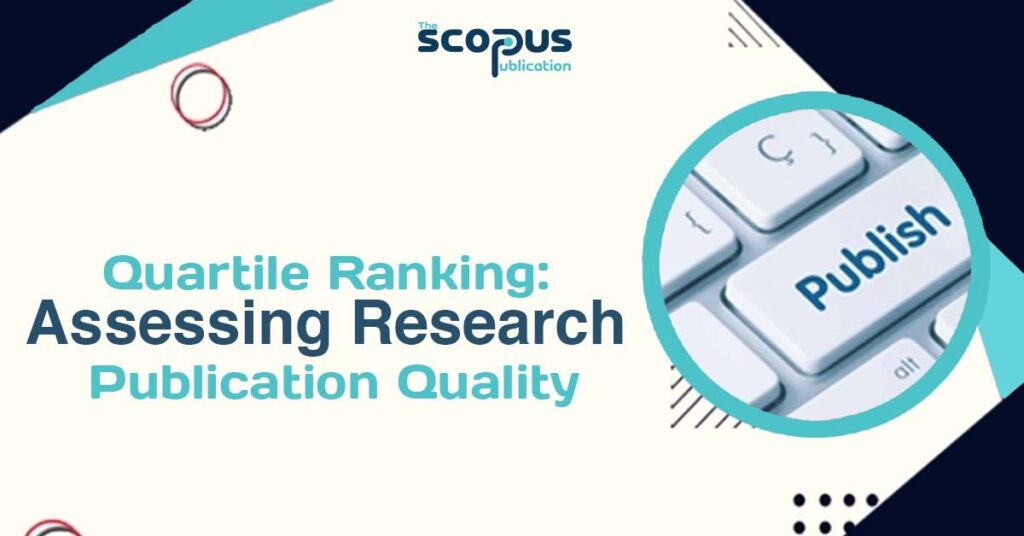Research demands commitment and dedication. Understandably, you want to be rewarded for this struggle and hard work with appropriate recognition and authority of your research. The best way to attract this right level of credibility is to get published in an online research publication that is considered credible by authorities in your field.
You can use different measures to determine if a publication gains enough traction or not. So, you can check the journal’s impact factor, check its editors’ credentials, or look up its quartile rank to determine its quality. This blog post will focus on using quartile ranking to determine the worth of a journal.
What is Journal Quartile Ranking?
Quartile ranking is a parameter that determines the quality of a journal. You can use it to assess journals in all subjects and disciplines including social, life, and health sciences, engineering fields, and business studies. These ranks are available from their respective indexes.
Let’s suppose the journal you are aiming at is a Scopus-indexed journal and you want to know its quartile rank. You can visit the Scopus website and enter the name of your journal in the journal search box. From there, you must select the ranking system – Quartile ranking – you want to view to get the required piece of information.
How is Quartile Rank Calculated?
Now, we know that quartile rank is an important factor that eases the process of finding your ideal journal for your next research publication. However, you will want to know what factors contribute to calculating this journal rank. Three factors come together to calculate this rank most influential of which is the impact factor of these journals.
The journal impact factor refers to the number of citations calculated by a journal over one year. This factor uses a simple calculation formula, which is given below.
Journal Impact Factor (IF) = Number of citations in a year/number of publications in previous two years
As we can see this factor compares the number of citations received by a journal with the frequency with which it was published. An ideal figure for this impact factor is 10 or higher. A number less than 10 and greater than 3 is considered reasonable.
Now that we have discussed the contribution of the journal impact factor in the calculation of quartile rank, let’s consider other factors. The other two factors include citations received by the articles published in the said journal as well as its indexation.
Types of Quartile Ranking Systems
Journal quartile rankings are published by four different sources. These include Journal Citation Reports (JCR), SCImago Journal and Country Rank (SJR), Scopus Journal Ranking System, and Web of Science Journal Ranking System.
Journal Citation Reports (JCR)
Clarivate Analytics developed it to qualify academic journals according to their merits. It also calculates impact factors for journals (IF).
SCImago Journal
It is developed by SCImago Lab which is a part of Consejo Superior de Investigaciones Cientiicas (CSIC). Its calculation is based on the Scopus database of journals and citations. This body of scholastic works also ranks countries based on their research output.
Scopus Journal Ranking System
This ranking system uses different metrics including citation counts, patterns, and credibility of journals citing these citations.
Web of Science Journal Ranking System
It is another initiative from Clarivate Analytics that holds a broad database for journal articles, reviews, and conference proceedings. This metric uses data points from all these inputs.
What are Quartile Ranks
Now that we have discussed the meaning of quartile ranks and the indexes that publish these ranks, let’s move toward defining these ranks more clearly. As the name suggests, journals can be ranked in one out of four quartiles. These are termed as Q1, Q2, Q3, and Q4.
The first and most desirable quartile, Q1 is the top quartile. Journals in this quartile are the most revered and credible. Researchers dream of getting their research published in journals qualified under the Q1 quartile. These journals make it to the top 76-100% of journals based on their credibility and citations.
Q2 is the second quartile. Although it isn’t as likable as Q1, journals under this quartile are considered way better than journals under Q3 and Q4. These journals have enough quality to rank between 51-75% of all publications. Publishing in these journals is a reasonably huge achievement. Although they aren’t as credible as Q1 journals, they have reasonable reach within academic circles.
Q3 is the third quartile and usually national and local journal publications. If you are looking for local exposure, you should try publishing your research in these journals. Of course, getting published in these journals isn’t too difficult. However, you need to ensure quality and depth to increase your chances of exposure and success in these journals.
As you can imagine, Q4 lists those journals that haven’t gathered much traction. Sometimes, these journals are new publications that are trying to gain their footing. At other times, they don’t offer much quality and so have descended to this quartile. These journals are best for entry-level researchers who aren’t confident about the scope of their research.
How to Choose a Journal for Publication?
Your research deserves exposure and reach because of the level of hard work and commitment you have put in to see it through. Don’t compromise on publishing it in low-quality publications. Hire optimal research paper publishing services and ensure the success of your research. Quality publication support services will ensure you choose the right journal for your research. They will consider the scope of your research and suggest relevant journals with a dignified impact factor and quartile rank.
Wrapping Up
This blog post discusses the importance of checking the Quartile ranking for the journal you are targeting for your research paper publication. Journals are always categorized into one out of four quartiles depending on their credibility and reach. Out of these Q1 is the most beneficial while Q4 is the least.


